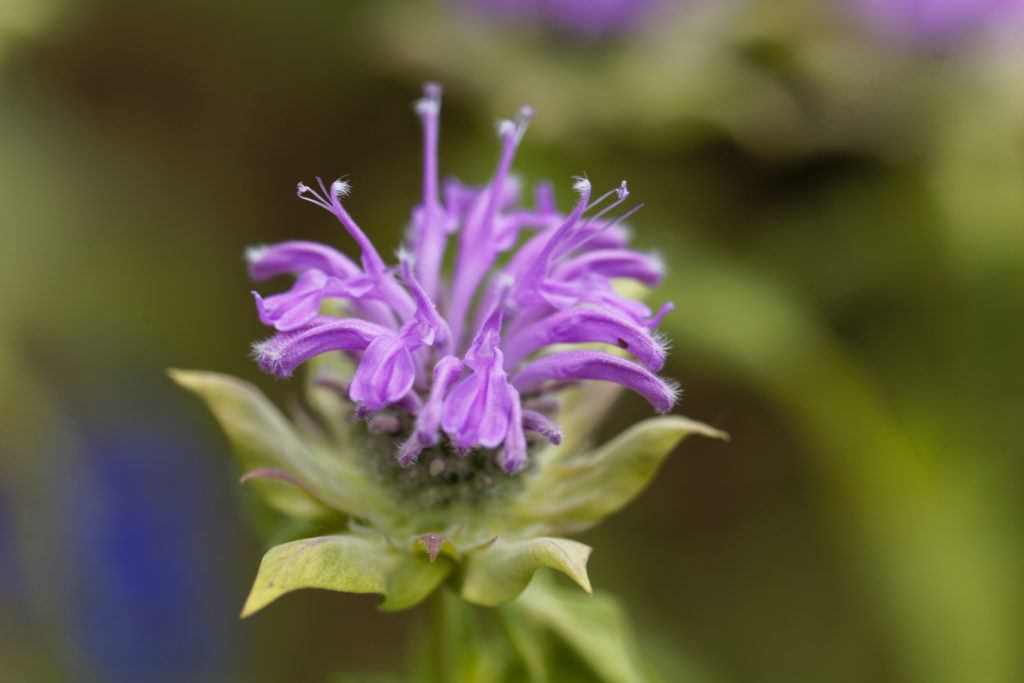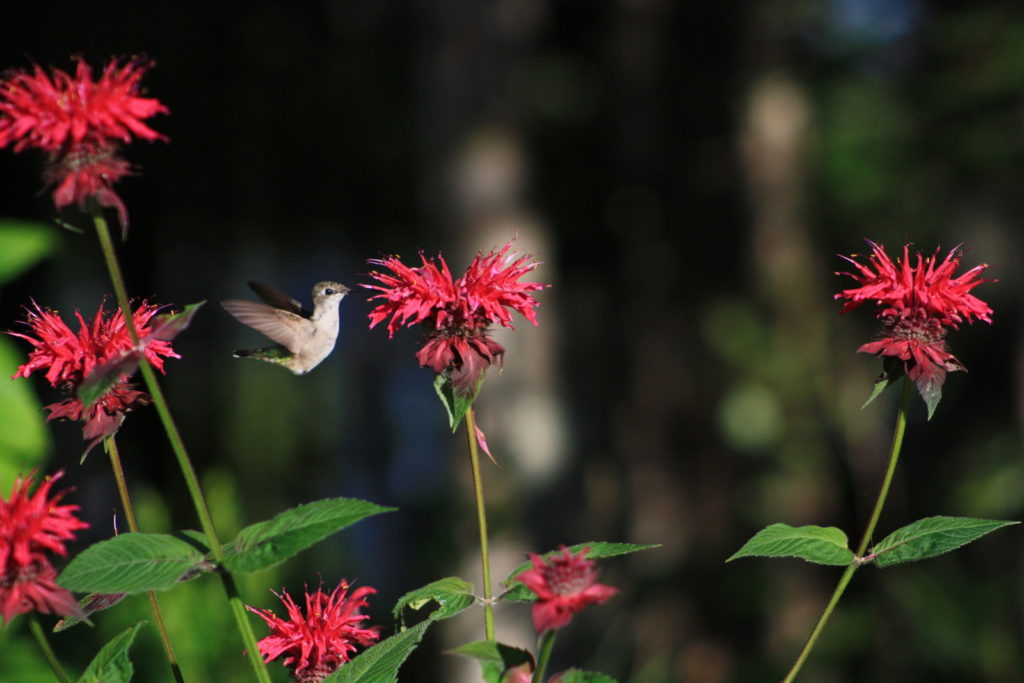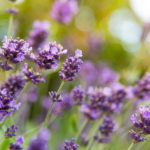Bee balm is a tall perennial herb native to North America. Bee balm is also called by its botanical name—Monarda, and is also called bergamot (because the scent is similar to the citrus fruit bergamot, an orange), and is also referred to as Oswego tea (the Oswego Indians made tea from the leaves). It has a minty fragrance and the leaves are used for making tea and are added to salads and jellies. The blooms have a colorful, shaggy appearance and can be planted in both the herb garden and perennial border.
Here is your complete guide to growing bee balm.
Where to plant monarda–bee balm
- Best location: Bee balm prefers partial shade but tolerates full sun. Plant where there is good air circulation to prevent powdery mildew which can hit leaves in late summer.
- Soil preparation: Plant bee balm in moist but well-drained soil rich in organic matter. Bee balm prefers a soil pH of 6.5 to 8. Prepare planting beds by adding a couple of inches of aged compost or commercial organic planting mix to the planting bed and turning it under.

When to plant monarda–bee balm
- Seed starting indoors: Start bee balm seeds indoors 8 weeks before the last spring frost. Start seeds in flats or pots under fluorescent lights. Keep the seed starting mix at 55°F or thereabouts.
- Transplanting to the garden: Transplant well-rooted bee balm plants to the garden one week before the last spring frost. Transplant seedlings or rooted cuttings outdoors in late spring.
- Outdoor planting time: Start bee balm seed outdoors in mid-spring after all danger of frost has passed.
How to plant monarda–bee balm
- Planting depth: Sow seed ¼ to ½ inch deep.
- Spacing: Space plants 12 inches apart. Bee balm grows in clumps and spreads rapidly. A clump may need two square feet or more.
- How much to plant: Grow 6 bee balm plants for tea or preserving.
Companion planting monarda–bee balm
- Companion planting: Bee balm is said to enhance the growth of tomatoes and peppers. It attracts butterflies, bees, and hummingbirds. Plant bee balm with sweet woodruff.
Watering and feeding monarda–bee balm
- Watering: Bee balm needs moderate water; water plants just when the soil starts to dry out. Bee balm can grow in dry soil and is less likely to be invasive in dry soil. Bee balm will grow lush with ample water.
- Feeding: Apply ½ inch of compost to the planting bed each spring. Feed plants with all-purpose even fertilizer such as 10-10-10.in midsummer.
Monarda–bee balm care and maintenance
- Care: Be prepared to pull or dig out new sprouts. Mats of shallow roots can be invasive in moist soil; you may want to place metal barriers around root clumps to keep roots from running. Cut back plants periodically to keep them compact. Divide plants every 3 or 4 years; this will help control the rapid spread. For fall blooms, prune them back by to just a few inches above the ground after the first flowering.
- Mulching: Mulch bee balm in winter to protect roots from cold and snow.
Container growing monarda–bee balm
- Container growing: Bee balm can be grown as an individual plant in its own container or in a group in a large container or tub. Plants lose their bottom leaves at the end of summer and look leggy.
- Winter growing: Bee balm is cold hardy but will likely die back in cold weather. Container-grown plants can be moved indoors in winter but they are unlikely to flower.
Monarda–bee balm pests and diseases
- Pests: Bee balm is usually pest-free.
- Diseases: Rust and powdery mildew can attack bee balm in late summer. Control powdery mildew and rust with good air circulation, spacing plants and cutting plants back to the ground after flowering.

How to harvest monarda–bee balm
- When to harvest: Harvest leaves as needed. For the best flavor, harvest leaves before flower buds open.
- How to harvest: For drying in quantity, cut stems about one inch above the ground before bloom in early summer and again in late summer. Cut flowers for drying when blooms are almost fully open. Cut plants down to 1 inch of the ground after flowering; this will promote new growth and a second flowering.
Monarda–bee balm in the kitchen
- Flavor and aroma: Bee balm tastes and smells like mint with citrusy undertones of orange and lemon. Some say it smells like Earl Grey tea.
- Use fresh flowers and leaves in fruit, salads, teas, lemonade, pork, poultry, and jellies.
- Leaves: Sprinkle fresh flowers in salads. Use fresh whole or chopped leaves to flavor duck, pork, meat sausages, and curries
- Flowers: Add flowers to salads. Petals taste like oregano; sprinkle petals on salads or on pizza just out of the oven.
- Teas: Fresh and bee balm leaves make good teas, alone, or in combination with other herbs. Inhaling the steam produced by combining leaves with boiling water will relieve a sore throat
- Culinary complements: Bee balm’s citrusy flavor complements fruits, strawberries, apples, oranges, tangerines, and melons. Ground dried leaves and flowers can be used as a substitute for oregano and marjoram.
Preserving and storing monarda–bee balm
- Drying: Strip bee balm leaves from stems and dry them on screens or drying trays for two or three days in a warm, shady place or dry leaves in a dehydrator. In a fine mesh bag, leaves and flowers will dry in 2 to 7 days
- Dry leaves in the refrigerator by spreading the leaves evenly on a baking sheet covered with paper towels.
Monarda–bee balm propagation
- Grow bee balm can be grown from seed, cuttings, and divisions.
- Seed: Seeds are best stratified (placed in the refrigerator) for three months before sowing; germination occurs in 14 to 21 days. Sow seeds indoors then set out transplants.
- Division: Divide plants fall or spring. Divide plants as soon as clumps grow larger, at least every three years. Replant divisions in soil amended with aged compost. The center of plants tends to die so take divisions from the outer edges of clumps.
- Cuttings: Root tender tip cuttings in early summer. Dip tip cuttings in a rooting hormone and plant in organic potting mix.
- Layering: Bee balm can be propagated by layering. Stems that touch the ground will grow roots and can be divided to form new plants.
Monarda–bee balm varieties to grow
Bee balm cultivars include:
- ‘Cambridge Scarlet’: Red blooms on leafy spikes.
- ‘Croftway Pink’: pink blossoms.
- Lemon mint: pink-purple blooms.
- ‘Marshall’s Delight’: pink blooms, resistant to powdery mildew.
- ‘Raspberry Wine’ scarlet with lilac undertones.
- Wild bergamot (Monarda fistulosa): Lavender flowers and a very strong fragrance.
Get to know monarda–bee balm
- Botanical name and family: Monarda didyma, a member of the Lamiaceae—mint family.
- Type of plant: Bee balm is a herbaceous perennial.
- Growing season: Spring and summer; plants die back in winter.
- Growing zones: Bee balm grows best in Zones 4 to 10.
- Hardiness: Bee balm is resistant to cold and heat; it’s cold hardy to -20°
- Plant form and size: Bee balm is a bushy plant that grows 3 to 5 feet tall; the leafy, branching stems grow from clumps; bee balm has shallow, spreading roots.
- Flowers: Bee balm has tubular, two-lipped flowers that bloom in showy tiered whorls at stem tips; flower colors range from white to pink, purple, and scarlet. Bee balm flowers have a rich citrus-like scent.
- Bloom time: Bee balm blooms early to late summer; a second bloom will appear if the first blooms are deadheaded.
- Leaves: Bee balm has dark green, toothed leaves that grow opposite one another; leaves grow on square stalks similar to mint. The leaf surface has a hint of downy fuzz.
Also of interest:
- Anise
- Anise Hyssop
- Arugula
- Basil
- Bay
- Bee Balm
- Borage
- Calendula
- Caraway
- Catnip
- Chamomile
- Chervil
- Chives
- Cilantro-Coriander
- Clary
- Costmary
- Cress
- Dill
- Fennel, Sweet
- Horseradish
- Hyssop
- Lavender
- Lemon Balm
- Lemon Verbena
- Lovage
- Marjoram
- Mint
- Nasturtium
- Oregano
- Parsley
- Perilla
- Rosemary
- Sage
- Salad Burnet
- Savory
- Scented Geranium
- Shiso
- Sorrel
- Stevia
- Sweet Cicely
- Tarragon
- Thyme
Related articles:
Best Herbs for Container Growing
Planning the Home Fruit Garden
Garden Planning Books at Amazon:
- Vegetable Garden Almanac & Planner
- Kitchen Garden Grower’s Guide Vegetable Encyclopedia
- Vegetable Garden Grower’s Guide
- Tomato Grower’s Answer Book















